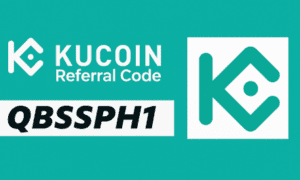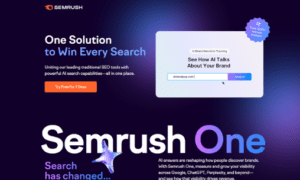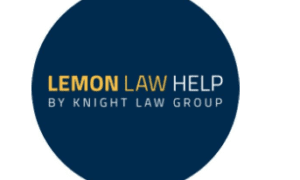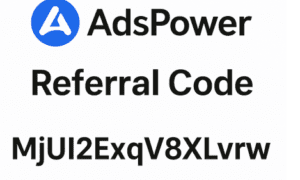18 Strategies for Scaling Startups While Maintaining Quality
Growing a startup successfully requires balancing rapid expansion with consistent quality, a challenge examined by industry experts in this comprehensive guide. The article presents 18 practical strategies that help founders maintain excellence while scaling their operations. These approaches cover essential areas including automation, system development, resource management, and preserving customer relationships throughout the growth journey.
- Cap Client Intake to Preserve Quality
- Scale Through Structure Not Speed
- Build Systems Before Revenue Grows
- Conduct Regular Role Audits for Clarity
- Create Data-Driven Frameworks for Consistent Results
- Test Features With Engaged Early Adopters
- Implement Quality Gate Review Process
- Focus on Core Products, Outsource Everything Else
- Limit Features to Strengthen Core Experience
- Preserve Customer Voice Throughout Organization
- Cut Back to Scale Up
- Automate Tracking While Maintaining Human Oversight
- Use Continuous Integration With Quality Gates
- Deploy Independent Services With Defined Boundaries
- Manage Technical Debt With Strategic Priorities
- Build Complete Scalable Systems From Start
- Standardize Processes Without Sacrificing Creativity
- Design Modular Products for Quick Iteration
Cap Client Intake to Preserve Quality
We almost lost it chasing growth. That’s the honest answer.
Around 2021 we were adding clients faster than we could keep up with, and quality started slipping. Not massively, but enough that I’d hear it in customer calls. Delays, small bugs, responses taking longer. The kind of stuff that doesn’t tank your business overnight but quietly kills trust.
The strategy that pulled us back?
We capped new client intake.
Sounds insane when you’re trying to scale, right? But we literally put a number on how many new clients we’d onboard each month and stuck to it, even when sales wanted to keep pushing. If we hit the cap, new clients waited two weeks. Some competitors probably grabbed a few because of it.
But here’s what happened: our team stopped sprinting just to keep up and started actually improving things. Customer success could spend real time with each client instead of doing surface-level check-ins. Product could fix the small annoying things that had been piling up. Suddenly our retention numbers jumped because clients were actually getting results, not just getting signed.
The other thing we did, which felt small but mattered, was this: every two weeks the product and customer success teams sat together and tore apart the last batch of onboardings. What confused people? Where did they get stuck? What did we promise that didn’t land?
Then we’d make tiny changes immediately. Not some big quarterly roadmap revision, just small fixes rolled out fast. That feedback loop kept quality from degrading while we grew.
I learned that growth doesn’t break quality. Pretending you can grow without constraints does. You need governors on the system, even when every instinct says go faster.

Scale Through Structure Not Speed
When you scale quickly in edtech, there’s always a real chance that your product becomes “good enough” — functional, but devoid of its soul. We faced that dynamic when we began scaling to dozens of countries; one strategy made a big difference for us: we initiated scaling through structure, not speed.
Instead of rushing to produce more features, we raced to make our platform modular and resilient. We increased our investment in automated testing, established external quality measures, and introduced more gradual rollouts where updates are released first to a smaller user group. This approach allows us to address problems early and makes it easier to fix material issues and bugs before the broader community feels the effect.
We built a small “quality radar” team also, whose job is not to launch new features but rather to monitor metrics around user feedback, interaction completion, and performance measures. If something dips very low, the quality radar team will interrupt new launches indefinitely until replenishing or repairing the fundamentals.
For example, when we launched a new quality streaming module, it worked beautifully everywhere we launched it with students who had very high bandwidth, except in the regions where the internet was slow. Because of the structured rollout, we noticed and were able to optimize the system quickly before we disrupted thousands of students.
Scaling isn’t simply about growing quickly; it’s about thinking and growing intelligently. Protect your core, listen closely, and only progress when quality can progress with you. That is how you can scale and maintain what makes your product unique.

Build Systems Before Revenue Grows
Scaling a company sounds exciting on paper, but in reality, it’s one of the hardest balancing acts a leader faces — especially when your reputation is built on quality. Growing 160% over three years didn’t come from chasing scale for its own sake. It came from doubling down on discipline, structure, and culture while keeping our promise of delivering exceptional service. The biggest lesson I’ve learned is that growth doesn’t have to mean chaos — but only if you’re intentional about how you build it.
Early on, I made the decision that every system had to scale before the revenue did. We invested heavily in process automation and standardization through tools like HaloPSA, HubSpot, and N-able. That allowed us to handle more volume without losing visibility or control. We built playbooks for every repeatable function — from onboarding to escalation — and made sure each team had clear KPIs tied to both performance and customer experience. When your systems are strong, scaling stops being about adding people and starts being about amplifying results.
But the real secret wasn’t technology — it was people and communication. As we grew, I realized that maintaining quality wasn’t about watching every ticket or call; it was about building a culture of accountability and care. Every person in the company knows our mission — fun, success, and innovation for our people and customers — and that drives how they show up. We introduced clear team structures with technical and non-technical leads, set up internal mentorships, and made sure feedback loops were constant. Growth created complexity, but structure created clarity.
Another key strategy was aligning leadership around measurable impact. Every department — from finance to L1 support — tracks KPIs weekly. That rhythm keeps everyone accountable and lets us spot small cracks before they become big problems. Consistency became our competitive edge.
If there’s one piece of advice I’d share with other founders, it’s this: scaling isn’t about growing fast — it’s about growing right. Automate early, communicate clearly, and never compromise on the customer experience that got you started. The moment you lose quality, you start trading long-term loyalty for short-term numbers. We chose the opposite — and that’s why we’re still growing strong.

Conduct Regular Role Audits for Clarity
The thing that has helped us maintain quality as we grew larger was clarity of roles alongside prioritization. When I looked at the companies that were growing my way (Epiic and Get A Copywriter), I could see they were organized like sponges. People organically decided to “do what needed to be done.” But it was often unclear who was doing what for whom and where value was being created or destroyed. This spongy network of overlapping roles creates lots of friction, and every crack is a route for quality to leak out.
I launched a regular “role audit” to fix this. Every quarter, we’d have everyone describe their main working functions, recent outputs, and current goals. Then we’d compare this map with existing team priorities and company OKRs. This would reveal role overlaps and latent bottlenecks. For example, we discovered that two of our growth leads were running completely different channel tests (SEO and paid) without any coordination, which was causing duplicate work and a dissonant message in-market. We redirected them toward a unified acquisition funnel and assigned clear responsibilities. The conversion of qualified leads increased as a result.
It also made clear what people should be focusing on, so it was safe to push back when asked to do work outside those areas. This reduced context switching and resulted in fewer defects at release and more productive feedback loops with engineering.
Overall, what founders can do is run a roles/priorities workshop so they get a clearer picture of the structure that’s implicit in a growing company. Have the leaders discuss what their top three priorities are. In their answers you’ll find some low-hanging wins that spell the difference between unmanageable chaos and quality, sustainable growth.

Create Data-Driven Frameworks for Consistent Results
Scaling was about building systems that preserved our core focus on quality while allowing for growth. Instead of rushing to take on every new opportunity, we invested early in process automation, documentation, and specialized roles within our team. This ensured that as our client base expanded, every project still received the same level of strategic insight and design precision that defined our early work. We also built a culture of accountability — each team member understands how their work directly impacts client KPIs and business outcomes, which keeps quality at the center of every deliverable.
One strategy that proved especially effective was developing a repeatable CRO and UX framework grounded in data. Every client engagement begins with analytics, user behavior insights, and performance benchmarks. This structure not only keeps our output consistent but also ensures that scaling doesn’t dilute results. Whether we’re handling ten clients or fifty, our process remains the same — test, measure, iterate, and optimize. That balance of scalability and precision has allowed us to maintain a 98% client retention rate while consistently driving measurable growth for our partners.

Test Features With Engaged Early Adopters
Scaling without compromising product quality came down to one principle: grow with purpose, not pressure. Because our platform deals with something as personal as preserving legacies and advance care planning, we couldn’t afford to move fast and break things. Every new feature or user milestone had to enhance trust, privacy, and emotional value, not just numbers.
One strategy that proved particularly effective was our initial trial release. Before scaling any feature to a wider audience, we tested it with a small group of early adopters who were deeply engaged with the product, often people who had already begun recording their legacy messages and advance care planning. We gathered detailed feedback, refined the experience, and only then rolled it out more broadly.
This approach slowed us down initially, but it built a stronger foundation. It ensured our growth didn’t outpace the quality of experience that defines our company. Over time, it also created a loyal community of users who felt personally invested in shaping the platform, and that authenticity became one of our biggest strengths as we scaled.

Implement Quality Gate Review Process
I’m a co-founder of a media company who scaled our company over the past five years, all this while we made sure that every deliverable of our products is always kept at our original quality benchmark.
From everything that we tried in the past, the single most effective strategy was building what we like to call a “quality gate” process. This means that every major delivery and deal goes through a short review by at least one of our more experienced team members who wasn’t directly involved in the delivery.
This tactic maintained our standards while we were scaling, but what it also did was turn our internal review sessions into fast and more productive idea-sharing exchanges. This meant the actual quality of our products and services, including the skills of our individual team members, improved significantly, which made scaling the company possible.

Focus on Core Products, Outsource Everything Else
When you’re growing a startup, it’s easy to get caught up in doing everything yourself — but we learned early on that focus is what protects quality. For us, scaling meant doubling down on what we do best: building powerful, intuitive franchise mapping and management tools. That’s our core product, and it’s where we spend our energy.
The strategy that’s worked is knowing when not to do it all. We outsource the parts that don’t define us — like certain marketing operations, third-party integrations, or non-core development tasks — so we can stay focused on the experience our users actually touch. Every feature, every label, every map view goes through us directly, because that’s where the value lives.
It’s kept our growth steady and our quality high. By staying small, intentional, and focused on the core product, we’ve been able to scale without losing the precision and clarity that made us resonate in the first place.

Limit Features to Strengthen Core Experience
When our startup started to grow, feature requests came flying in from every direction. Everyone had a great idea; usually five of them; and it was tempting to say yes to everything. But I kept thinking about that old quote often credited to Henry Ford: “You can have it in any colour, so long as it’s black.” It sounds harsh, but it’s a great filter. We decided that unless we got at least ten separate signals from users asking for the same thing, we wouldn’t build it. Instead, we poured our energy into making the core experience faster, sturdier, and easier to use.
That decision probably saved the product. It kept us from bloating the app with half-finished ideas and gave us the time to make what we already had feel solid. Users might not always notice new features, but they notice when things just work. Focusing on stability and simplicity turned out to be the most scalable move we could have made. Growth didn’t come from chasing every new request; it came from earning quiet trust that the core product would never let people down.

Preserve Customer Voice Throughout Organization
We go out of our way to preserve the voice of the customer throughout our organization. It’s so easy for leaders to get focused on internal processes and efficiency and lose sight of the mission to serve consumers. We do this by ensuring leaders in the customer-facing departments of our organization still spend a certain amount of time each week engaging with customers; that goes for onboarding, support, and customer experience. We also take time to connect those areas with our product team, to guarantee a consistent pipeline from customer feedback to product development. It keeps our growing team connected in their vision for success, and prevents decision-makers from losing touch with the needs and wants of our customer base.

Cut Back to Scale Up
We basically had to cut back on what we were doing, not pile on more, when we needed to scale. Coming from a place of growth pressure, that doesn’t feel right, but it’s what saved our product. We’d review the roadmap, rank the projects and kill off anything that wasn’t getting the job done for our users, no wish lists or pet projects. We didn’t fill up on staff until it became physically impossible to manage with the existing team, which made sure that the quality of work stayed high.
As a result, we found that it’s better to take a little extra time and do things well, rather than rushing them.
Clean code and clear plans have proved to be way more scalable.

Automate Tracking While Maintaining Human Oversight
Combining intelligent automation with human oversight is the only way we could scale internationally without mistakes. We were onboarding dozens of new customers while managing thousands of cases each month, so scaling was one of those times when excitement and pressure came together.
We automated our tracking and reporting systems early on with a CRM. In the beginning, manually reviewing each transaction before it was sent out allowed us to maintain consistency in quality. For instance, we included a second check from our operations team to ensure that all country-specific information was accurate while we implemented automated invoice generation.

Use Continuous Integration With Quality Gates
We use Continuous Integration practices extensively. This includes automated testing of all our components. Everything is tested, and that’s how we ensure that adding new features won’t introduce new bugs. All our developers’ pull requests into the codebase must pass these quality gates.
As for recruiting, we are extremely careful when we hire someone. We want to be sure every new person who joins our team brings something new and can teach us something new. That way, we know we are getting smarter as a team.

Deploy Independent Services With Defined Boundaries
The platform achieved success through our decision to divide it into multiple independent deployable services during the initial development phase. The parallel team scaling process became possible because each team operated independently from one another. The order processing and tracking modules of our logistics project received separate .NET Core service deployment through defined API boundaries.
The shared CI/CD pipelines in TeamCity and automated tests with NUnit enabled us to maintain consistent quality standards. The team expansion and feature addition did not affect the low regression rates and stable release schedules because of the existing automated checks. The company achieved growth through establishing boundaries and developing automation instead of compromising on quality.

Manage Technical Debt With Strategic Priorities
We didn’t avoid compromising quality; we constantly managed it. At a GenAI startup, where I have been a Tech Lead for about four years (we’ve worked our way through the Seed and then Series A rounds), I realized that focusing on the tension between development speed and quality is the wrong strategy. Technical debt is not the main enemy. When you need to develop quickly, it is inevitable, and that’s fine. What’s really important is to treat it as a real debt: systematically monitor it and decide when to pay it off. We maintain the list of tasks (areas, systems, features, etc.) with technical debt and conduct regular reviews and prioritization, and work on it when it truly becomes a threat or problem soon, not when it looks “messy” on paper.
Here’s a counterintuitive thought: in a startup, doing something “right” today is usually more expensive than doing the same thing later. While you’re over-engineering a system for hypothetical future scenarios, you’re wasting time that could be spent building features that truly differentiate you in the market. It’s a real skill to identify where you can safely cut corners without risking critical issues later. This requires analysis and experience, and it’s part of the process.
Working with AI systems adds an additional layer of complexity. For example, when we were developing a GRC question-answering system, the core of the product was an AI model: the model’s output isn’t always predictable, and there were dozens of edge cases around it in post-processing heuristics and business logic. It was impossible to anticipate and test everything in advance. So, we covered the most important paths. We invested in an alert and monitoring system, and we use it everywhere. Its purpose is to notify us as soon as something goes wrong, so we can quickly correct it.
This approach allowed us to quickly release and maintain the required level of quality where it really matters. The strategy that has proven most effective is to be mindful of simplifications and technical debt. You can’t blindly accumulate it, but you also can’t let “best practices” paralyze you.
Do what will get you to the next goal, measure, and be prepared to respond to changes and breakdowns. In a startup, the ability to move quickly and respond to change beats perfect architecture every time.

Build Complete Scalable Systems From Start
Maintaining product quality while scaling rapidly was one of our biggest challenges. When your customer base explodes, there’s tremendous pressure to move quickly, but we knew compromising quality wasn’t an option when customers depend on our platform daily.
Our most effective strategy was building scalable systems from the start, not just technical infrastructure, but people and processes too. We systematically automated routine tasks and established clear quality checkpoints throughout our development cycle. Every feature undergoes real-world testing with a small user group before wider rollout, giving us quick, honest feedback and allowing us to address issues while they’re still manageable.
On the team side, we prioritized careful hiring over rapid expansion, ensuring each new hire thoroughly understood our quality standards. This balanced approach to automation, user feedback, and company culture has been crucial to our growth, allowing us to scale rapidly without sacrificing the reliability our customers expect.

Standardize Processes Without Sacrificing Creativity
To scale without sacrificing quality, a mindful approach to balancing operational discipline with creative integrity was necessary. One of the biggest challenges was sustaining the bespoke, personalized service our clients expect while simultaneously increasing project volume and expanding our team.
The most effective approach was to standardize design and quality control to a considerable extent without diminishing the creative input. This involved the completion of robust project checklists, templates, and quality benchmarks that every team member was required to adhere to ensure consistent cross-client engagement. To mitigate the risk of deviation and ensure brand standard adherence, we instituted a tiered, milestone-structured review process whereby senior designers assess projects.
The mindful structuring of workflows with the necessary creative input means we can scale without losing the thoughtful attention and quality focus that is our standard with each project. Additionally, maintaining high morale, skill, and excellence necessary for progressive growth was achieved through equipping team members with clearly defined responsibilities and providing ongoing training. This positioned us to scale with confidence.

Design Modular Products for Quick Iteration
A solid, scalable framework must be established early in the startup’s life cycle to sustain the quality of the product and service it can deliver. We have employed automation and AI to automate data entry, user management, and user follow-up so that our human resources can concentrate on developing the product and advancing the customer experience.
One of our best ideas for success was modular product design. It was important to be able to iterate quickly and improve our features through authentic user experience and feedback, while not overloading and burning out our development team in the process.
Scaling is a resource allocation paradigm, not a growth paradigm. Automating repetitive processes and using legitimate data helped us scale our offering to a level of quality that is satisfactory.

Related Articles
- Outsourcing Startup Customer Service: A Growth Strategy
- Signs You Should Consider Outsourcing Social Media
- How White Label WordPress Services Help Agencies Focus on
- Scaling Tech Solutions: What Challenges Do Businesses Face?
- Unique Problem-Solving Methods: 18 Startup Success Stories
- Balancing Velocity and Work-Life: Strategies from Tech Leaders



































